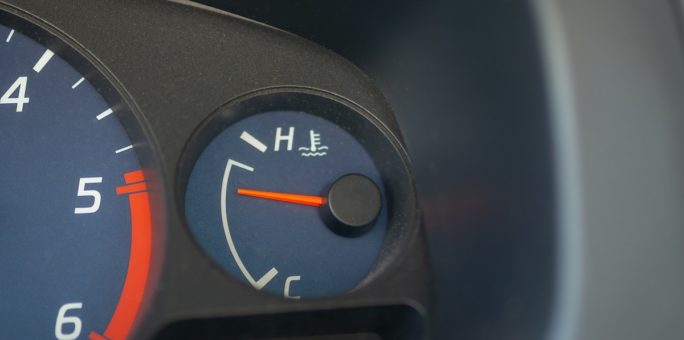What would be the steps to do at a stage when the car is overheating, you can be with your family on a vacation driving a long journey on a highway, easily you would be worried about what to do in this situation, to make sure you drive safe long or short journey with or without your family if you stuck at a situation when your vehicle is overheating.
Here we first understand what to do when car is overheating without a panic attack
Common Signs of Engine Overheating:
- White smoke, steam billowing out from under the hood of your vehicle
- If your vehicle has a temperature gauge on the dashboard and it spikes into the red or to “H” then that is a sure sign that your vehicle too hot.
- If you smell a strange sweet or burning smell coming from the engine area, possibly caused by leaking coolant or oil respectively.
Relevant Info: How to Fix Engine Overheating
Steps of What to Do When the Car engine is Overheating? (these steps are for normal engine overheating)
- In case of engine overheating, turn off your Air condition and turn on your heat. This may seem counterintuitive, but turning on the heat can help shift the heat away from your engine and look for a place where you can park your vehicle.
- Open your vehicle hood and check secondary coolant bottle (reservoir) and see if it is empty or not, if it is then avail some coolant or water and fill the bottle without shutting down car engine and wait until vehicle temperature gauge cool it down.
- Next step is to open radiator cap after you see the gauge of vehicle slide down to a safe level, and then fill the coolant or water until it’s full and then close the cap.(Use towel or any fabric to open a cap and don’t put your face near to a cap it could be dangerous).
In case of failed to calm down heated engine regardless of all above steps taken, then it could be other problems such as Thermostat valve malfunctioned, Water pump fault, Radiator fan fault, Slipping belt, Lower radiator collapse, Low oil level and Plugged or dirty radiator.
- In case of a broken fan is a more common ailment. Fans often switch on while sitting in traffic to simulate rushing air. If that fan fails, then you’ll see the temperature begin to rise while sitting in traffic or driving in extremely hot environments.
- Those extreme temperatures could cause the car to overheat on its own as well. Even though most cars were designed to last in those locations, age can cause the cooling system to work at less than ideal strength.
- Slipping belt, you couldn’t do much except ask help.
6. In case of lower radiator collapse, you have to measure the amount of leakage, if it is too much then you have to check how long it will take when it gets fully empty, use that time to reach a place where you can get help.
OR
- With high speed at 65 mph on freeway helps to buy some extra time before your engine is getting heated, at that speed wind blow out a engine heat when it passed from the engine bay, it also works in hot condition as well.
- However in city it cannot be possible due to signals, low speed, it is very rare that vehicle cover a mile or more in city not even in winter conditions. (Follow step 6).
Note:
Low coolant in radiator or continue dropping coolant level from reservoir is a sign of having an issue related to leakage, or faulty radiator cap.
Coolant doesn’t drop its level not even in summer if it is not too old, it can live up to one year.
7. Low oil Level: Low oil level or too old oil can be a sign of engine overheating you can see a separate topic of engine overheating symptoms due to oil overdue.
Dirty Radiator: DIY Cleaning radiator before going to an expert mechanic.
Relevant Info: when you need to have a time to Flush Coolant
How can you prevent many of these engine overheating signs before it happened?
- Always check coolant and engine oil level once in a week.
- Never drive without having extra bottle of coolant and water.
- Perform scheduled maintenance such as hose replacements and radiator flushes to ensure debris and buildup don’t clog your radiator.
- Dirt and Dust causing blockage of coolant in to the hoses finding difficult for the coolant to circulate, you’ll have to do a full coolant flush and find the blockage to fix it.

